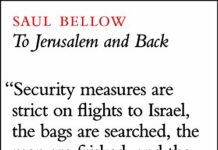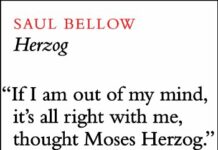
Ebook Info
- Published: 2015
- Number of pages: 264 pages
- Format: PDF
- File Size: 0.83 MB
- Authors: Saul Bellow
Description
Who is Mr. Sammler? A Jewish intellectual educated in Western philosophy, a one-eyed Holocaust survivor, the future author of the greatest biography ever written of H.G. Wells … or merely the trusted confidant of countless eccentric New Yorkers, a “registrar of follies”? Through the chaotic streets of the Upper West Side old Artur Sammler paces, meditating on the human condition; attentive to everything and appalled by nothing; haunted by his past, present, and future. His world seems on the brink of apocalypse; both the recent moon landing and the death of his beloved benefactor have him furiously speculating on the end. With his inimitable tragicomic mastery Saul Bellow delves once again, and the reader with him, into a contemporary and chaotic universe in which the most profound reflections on the meaning of life mingle with the absurd, histrionic, endless minutiae of the every day.
User’s Reviews
Reviews from Amazon users which were colected at the time this book was published on the website:
⭐In Saul Bellow’s National Book Award winning novel, “Mr Sammler’s Planet”, Artur Sammler, a 74-year old Holocaust survivor, is a devoted reader of the medieval German mystical philosopher, Meister Eckhart, Sammler’s love of Eckhart immediately established a bond with me. We are both Jewish, of the same age, and devoted students of the Meister. As the novel opens, Sammler travels every day from his west side New York City apartment to the 42 Street Library where he reads Eckart’s Latin works. Late in the novel, Sammler remembers how, returning from a trip to Israel, he was in his accustomed place in the library reading the following passage from the Meister.”Blessed are the poor in spirit. Poor is he who has nothing. He who is poor in spirit is receptive of all spirit. Now God is the Spirit of spirits. The fruit of the spirit is love, joy, and peace. See to it that you are stripped of all creatures, of all consolation from creatures. For certainly as long as creatures comfort and are able to comfort you, you will never find true comfort. But if nothing can comfort you save God, truly God will console you.” (209)Sammler observes that he does not literally believe what he reads. Still, after a lifetime of voracious reading, Sammler finds that he does not find the need to read anything else beyond Eckhart.Eckhart and his teachings of spirit and detachment form only one point of departure for Bellow’s rich, philosophical novel which considers the relationship between detachment and spirituality and human connection in the person of Artur Sammler. The novel is set over a three day period in 1969 in New York City with many flashbacks to Sammler’s earlier life as a Jewish-Polish emigre in London, where is was a friend of H.G Wells, and then to his wartime life in the Holocaust where his wife and many others were murdered before his eyes and he literally faced death from both the Nazis and the Poles.The book includes extensive dialog and the reader hears the voice of Sammler together with the voices of many others. However the novel is written in the third person through an omniscient narrator who seems to understand all his characters’ inward thoughts and whose voice often blends with theirs, particularly Sammler’s. The third person narration allows the reader to distance from and to reflect upon the voice and thoughts of Sammler.The novel is set against the backdrop of what was once termed the sexual revolution and also against the rise of the student protest movement and the New Left. Technological advance and the landing on the moon also form important parts of Sammler’s reflections in the novel, as do the crime-ridden, violent streets of New York City. Sammler reflects on his surroundings in interior monologues, but more so in conversations with others. Bellow introduces many of Sammler’s relatives and acquaintances. Sammler’s relationships and responses to them shape the book, which is a mix of interiority and action. Here follows some of the primary characters in the story.Sammler had been rescued from a displaced persons camp in 1947 by his nephew, Gruner, a successful physician and investor, who has largely financially supported Sammler throughout his life in America. Gruner has two adult children, a daughter who is sexually promiscuous and a son who is intellectually gifted but a drifter perpetually on the make. Sammler is uncomfortable with the lifestyles of both Gruner’s children.Gruner had also rescued Sammler’s daughter Shula, known as Shula-Slawa who had in her turn been rescued by nuns and lived in a convent during her teenage years where she absorbed Catholicism in addition to her Jewish birth religion. Shula-Slawa has been in an abusive marriage in Israel. Sammler rescues her yet again and brings her back to New York City. She steals a manuscript from an Indian biophysicist, a theft which leads eventually to a lengthy and important philosophical discussion between the scientist and Sammler.Sammler lives with his widowed, lonely niece in a west side apartment. In the course of his bus trips from the library, Sammler observes an African American pickpocket. The pickpocket, noticing Sammler’s attentions, follows Sammler home, leading to a pivotal scene and confrontation.Sammler lost an eye in the Holocaust. This partial blindness is a crucial metaphor in the novel as it encourages the reader and Sammler himself to reflect on the possible limitations of Sammler’s opinions and perspectives on what he sees. As the book progresses over its three-day course, Sammler seems to move from his internalized, isolated critical perspective on himself, American society and his family and acquaintances to a less critical perspective recognizing the importance of human bonds and commonalities. With all the emphasis he places on God and on detachment, as indicated in the quote earlier in this review, Eckhart’s mysticism also recognizes the importance of life in the world. Sammler comes to deepen, in my view, rather than to reject, his understanding of Eckhart’s spirituality and to appreciate the importance of human loyalty and to fulfilling what he calls the “terms of his contract”.Bellow’s novel provoked conflicting responses upon its publication, and it continues to do so. The novel has been subjected to a great deal of scholarly, critical attention, as is appropriate for its intellectual and human depth and for its themes. The book is not light reading. “Mr Sammler’s Planet” will bear repeated reflection. Readers will have different views about Sammler and about whether they agree with his various positions about the America of his day and our own. The book encouraged me to reflect, as only great literature can do, upon my own “contract” and my own thoughts and my engagement with life.Robin Friedman
⭐”Mr. Sammler’s Planet,” makes the case for sticking with an author’s big hits before delving into their more exotic offerings.Saul Bellow, of course, is/was a famous writer whose big triumphs were “The Adventures of Augie March” and “Herzog.”highwayscribery decided upon “Mr. Sammler’s Planet,” thanks to its being mentioned in a column by David Brooks of the “New York Times.”In “Children of the ’70s,” Brooks sought to put a damper on recent enthusiasms for 1970s New York as a dangerous, but freewheeling and artistically sympathetic urban landscape that, on balance, was much better than the white flight and capital disinvestment that characterized it.highwayscribery, who grew up in that New York, indulged just such a flight of fancy in his post memorializing the recently deceased downtown poet, Jim Carroll.Brooks noted in his piece that, when the city tried slum clearance on the upper West Side, “Crime did not abate. Passivity set in, the sense that nothing could be done. The novel, ‘Mr. Sammler’s Planet,’ by Saul Bellow captured some of the dispirited atmosphere of that era — the sense that New York City was a place of no-go zones, a place where one hunkered down.”Some.”Mr. Sammler’s Planet,” to the extent that it is about anything, fleshes out the post-Holocaust relationships between Jewish folk in New York: their mutual aid toward one another and the friendships forged by their unique and tragic recent history.It is, briefly, about a pick-pocket Sammler watches and with whom he later experiences an unfortunate encounter. It is about the pending death of a close friend and benefactor. It is about his wacky daughter and her personal quest to make a father whose claim to fame is a long-ago relationship with H.G. Wells relevant to fast-changing times.But these story threads are a skimpy skeleton upon which Mr. Bellow hung a lot of issues swimming around in his mind. It almost works until he gets into a discussion with Dr. Govinda Lal from whom his daughter Shula has stolen a manuscript.The exchange is characterized by long-winded discourses from both men on the nature of things, which, to their minds, cannot be described in elementary terms. The two gents hold court with only the rarest authorial interjections to remind us these are characters talking and not just a stream of raw, unplugged Bellow.The author was a Nobel Prize winner whose thoughts are novel and well-expressed. There is certainly valuable currency in “Mr. Sammler’s Planet,” but less of a story than one might expect from someone quite so celebrated.Bring on “Herzog.”
⭐I originally read this in 1970 while in college. I especially liked Mr. Sammler’s (Saul Bellow’s) observation on life in NYC at a time when it was all falling apart around them. NYC went bankrupt in 1973 for some of the very reasons he tries to relate to in his own life. I bought it to read again, and now that I am nearer his age, the insights are even more astute for any student of twentieth century history. Whether or not he intended to, Mr. Bellows reveals the downside of too many intellectuals in one place and time. I recommend this book to younger readers who have not had the opportunity to read the type of novel that was available to us then. Full of deep observation, rather than a lot of “airport fiction” that clings to the “less than 18 words per sentence and 14 sentences per paragraph” rule of modern publishing. Bellow is at his best in this novel, but you have to give him a chance and listen to what he has to say. Everyone eventually ends up where he is writing from.
⭐Much to irreverent and funny not to mention erudite for the American Zeitgeist. Let’s hope that not to many more of the “right thinking” censors get their hands on it!
⭐I read this 50years ago and again today. Amazing how much I had remembered. Mr. Sammler and his wisdom will stay with you.
⭐As above
⭐A profound and psychologically complex classic. I have read all of Bellow’s fiction, and this is his most mature work in my opinion. Not a light or easy read, but brutally honest and touching. Every page gives food for thought.
⭐Though few readers and critics would care to argue on the quality of Bellow’s `The Adventures of Augie March’ or `Humboldt’s Gift’, `Mr. Sammler’s Planet’ is a text which inspires much more disagreement. The novel’s focus is the experiences of Artur Sammler, a Holocaust survivor living in the liberal New York of the late 1960s. Unable to escape his memories of the old world, and to find any comfort in the Jewish faith, Sammler lives with one foot in New York and one in wartime Poland, a character both highly intellectual and erudite, but also hugely frustrated and confused. Sammler appears to work as a mouthpiece for Bellow, and nearly every opinion we get in the novel is Sammler’s, to a point where the narration seems almost first person. Sammler’s reactionary tone, which is generally agreed to also be that of Bellow in this novel, has provided derision and frustration from many critics, who see Bellow’s depiction of the Columbia students to be over-exaggerated and insulting, and the same of both the promiscuous Angela, and the Black thief, who is portrayed by Bellow as animalistic and purely physical. These portrayals, which have frustrated the majority of readers are an obstacle, but by no means destroy what is a fascinating and often illuminating novel.From Sammler’s recollection of an act of retribution in his escape from Auschwitz, to Wallace’s lunar dreams and Sammler’s struggle to unpack his own guilt, provide hugely thought provoking moments, often written with a beautiful, sparse language, and evoke some of the biggest questions and issues of the ouvre of an author known for his challenging of major themes. Equally, though sometimes a little exaggerated, Bellow’s close portrayals of characters like the tragically optimistic, scheme-obsessed Wallace and Sammler’s failed relationship with his own eccentric daughter Shula, are fantastically evoked. The majority of readers will encounter the frustrations of exaggerated stereotyping and the novel’s reactionary tone, but those willing to stick with the novel will find a wealth of strangely brilliant language, superb evocations of personal relationships, and some of the most poignant, sparse and moving evocations of holocaust experience anywhere in fiction.
⭐Thank you, G.H.
⭐Three days of the life of a seventy-odd-year-old Polish Jew in New York. He is going to witness everyday life in New York, recollect his life in England where he was a university professor up to 1939, remember his moving back to Poland in 1939 to solve some family inheritance, his being caught by the Germans with his wife and a great number of other Jews (one year after the Crystal Night, which makes it crazy of him to have gone back), being blinded in one eye by a German rifle butt, forced to dig their mass grave, lined up in front of it, shot and pushed into the grave, covered up with earth and then his crawling out of it, joining the partisans in some forest, escaping their anti-Jewish purification at the end of the war by surviving in a Polish vault in a cemetery, and finally his being sheltered in the Salzburg Displaced Persons Camp and recuperated from there by some cousin, a rich doctor in New York. With only one good eye he is going to live, see and observe life and become the gathering mind of western culture while filtering his vision through it. Thus he will refer to some one-hundred-and-sixty authors, philosophers, artists and works of art in these three days. One will emerge very strong, H.G. Wells whom he had known personally in the late 1930s and whose theories on the Moon he will reminisce and cross with the theories of an Indian scientist, Govinda Lal, who is technically thinking the migration of humanity towards other planets. He will observe the other members of his family. His daughter first who is a gatherer too, but of everything she can find in trashcans or public places, and she will manage to borrow, with the intention of not bringing it back, the only copy of the manuscript Govinda Lal used to deliver a lecture on the moon, in order to give it to her father in order to incite him to finish his essay on H.G. Wells. She is obviously spaced-out, particularly because she escaped the Nazis in Poland by being sheltered, half converted and educated by Polish nuns. Then we have the Gruners, the doctor who retrieved Mr Sammler and his daughter after the war, and his two children, Angela and Wallace, both spaced-out too because they were raised in a family that provided them with everything without having to make the slightest effort. Angela is described as a sex addict and Wallace as a dangerous half crazy squanderer. Finally another cousin, the widow Margotte Arkin, in whose flat he lives as a guest. The main two events of the novel are the aneurysm that will bring Dr Gruner to his death in three days, and the dishonest scavenging of Pr Lal’s manuscript by Shula, Mr Sammler’s daughter. Another character will give the opening event and one of the closing moments: the black pickpocket who will corner Mr Sammler, who has witnessed him in his picking pockets and purses, and exhibit his penis to assert his authority. This pickpocket will end up being severely wounded by Mr Sammler’s son-in-law, an Israeli artist visiting New York, when the Columbia University Professor Feffer will take pictures of the pickpocket in his criminal activities which will bring up some kind of a fight. The whole book is a vision of the western world before and after the Second World War by a man who has only one valid eye and who is screening everything through the numerous cultural references he has accumulated in his mind over the years. His vision is thus warped by its one-eyed-ness. He is obsessed by death, which is coming in Dr Gruner and which he has survived by crawling out of his own grave in which he left his own wife. He is also obsessed by God though his references are mostly marginal Christians like Meister Eckhardt or agnostic thinkers like H.G. Wells or Nazi-inspired or -influenced thinkers like Schopenhauer. And this is the most fascinating aspect of the book. It is entirely animated by a fight between three musics that are built by the sounds, the words, and the syntax of Mr Sammler’s language. The standard music of the Bible that becomes that of the world, a binary music built with choices between two elements or co-ordinations of two elements, or multiples of two. Then his intellectual, mental, abstract, conceptual constructions, always ternary because of Aristotle’s dialectic, the mould of all western thinking, and Mr Sammler reminds us several times that the Jewish God and the Jewish religion is not European, not western but Asian. Mr Sammler constantly tries to bring together these two logics and he does it in the most biblical way, by using Solomon’s number or David’s star (a symbol all by itself after WW2), i.e. six but always decomposed in twice three or three times two. The book thus closes on Mr Sammler’s prayer to God in front of Dr Gruner’s body awaiting an autopsy. The last word is “know”, the master word of a university intellectual, but entirely regenerated in a godly and divine direction by the subtle shifting from a conceptual “the terms […] each man knows”, to a personal “I know mine” and to the collective, Jewish, Israeli final sextuple vision in the collective “all know” followed by five “we know” centered on a direct address to God exactly before the last four “we know”, hence making divinely Christian (eight is the symbol of Jesus’s Second Coming, and four of his crucifixion) his very direct Jewish godly evocation. This novel is probably one of the most refined and best achievements by Saul bellow.Dr Jacques COULARDEAU, University Paris Dauphine & University Paris 1 Pantheon Sorbonne
⭐It’s another brilliant piece of writing from Mr. Bellow. There are suggestions or preaching – just the human condition as it really is.
⭐If you’re just approaching Bellow, read Mr. Sammler. If you’re a Bellow aficionado, re-read Mr. Sammler. It is utterly brilliant.
Keywords
Free Download Mr. Sammler’s Planet in PDF format
Mr. Sammler’s Planet PDF Free Download
Download Mr. Sammler’s Planet 2015 PDF Free
Mr. Sammler’s Planet 2015 PDF Free Download
Download Mr. Sammler’s Planet PDF
Free Download Ebook Mr. Sammler’s Planet



